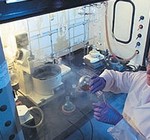A research paper published recently in Lancet Infectious Diseases has lead to an unfortunate storm of protest in India. Unfortunate because in the face of much reasonable concerns highlighted by the paper, the Indian government, medical community and sections of the media’s has reacted with outrage, denial and nebulous allegations of ‘Western conspiracy’, rather than thoughtful discourse.
The paper in question investigates a novel antibiotic-resistance conferring gene, first identified two years ago in a Swedish patient who had undergone surgical procedures in India. The gene — named New Delhi metallo-beta-lactamase-1 (NDM-1) as per its place of suspected origin — makes the bacteria resistant to a wide spectrum of antibiotics, including carbapenems, one of the strongest in use. The investigators found this deadly resistance-conferring gene to be widespread in bacteria isolated from patients across several hospitals in India, Pakistan and Bangladesh, as well as increased occurrences over two years in patients at British hospitals. A subset of these British patients had visited India and Pakistan for various surgical procedures.
Given the strict monitoring of microbial infections in Britain, it is reasonable to suspect that cases in that country came from the subcontinent. Independent of this, studies by Indian investigators have found the same antibiotic resistant forms in isolates from patients at the Hinduja Hospital in Mumbai. Also, the Center for Disease Control (CDC) in the United States have isolated these resistant forms in two patients who had received medical care in India, apart from cases being detected in Australia, Canada and the Netherlands.
Resistant bacteria, dubbed superbugs, emerge through rampant overuse and misuse of antibiotics, as is common in countries like China and India. In fact, alarms have been raised recently by a number of Indian doctors in various medical journals, warning about the overuse and improper prescribing of drugs in Indian hospitals. The existence of superbugs as such is a global health problem, especially due to widespread travel and relative lack of drugs in the pharmaceutical pipeline to combat them.
From the Indian standpoint, there are two real issues related to superbugs that need to be addressed. First, there are concerns about economic repercussions for the medical tourism industry—which generated revenues of around Rs 15 billion last year—particularly in light of a recommendation in the Lancet article against obtaining medical surgeries in India. While the recommendation was made within the specific framework rebutting a proposed money-saving policy for Britain’s National Health Service (NHS) through outsourcing surgeries to India, some Western media outlets have been guilty of broadly tarnishing the Indian healthcare industry.
Secondly, and of far greater concern, is the implication of these resistant pathogens for public health in India. The rise of the antibiotic resistance driven by overuse does not bode well for the economically weaker sections of the country that are most susceptible to infectious diseases. Bacterial resistance also adds to the overall economic burden for having to use newer, expensive, or worse, otherwise dangerous (in terms of side-effects) new antibiotics for treating infections.
So what should be India’s response to these two issues?
The solution to both the impact on medical tourism and the broader public health concerns lies in the country taking a firm stance on monitoring, control and ideally, prevention of future emergence of resistant pathogens.
With this in mind, India will do well to implement without delay, policies modelled on recommendations by World Health Organisation’s Global Strategy for Containment of Antimicrobial Resistance, some of which include:
1. Curbing antibiotic overuse through enforcement of existing laws to prevent indiscriminate dispensation of antibiotics. Regular auditing and strict penalties for pharmacies found to distribute antibiotics without prescription will help. It is important to educate the public and pharmacists about the inherent dangers of the antibiotic overuse, as well as that of not completing antibiotic courses.
2. Improving the training of doctors and healthcare professionals in the currently available spectrum of antibiotic drugs and their judicious use. A clear, national guideline on the usage of high-end antibiotics can prevent the overprescription of such drugs. The guideline could also include fair practices for the pharmaceutical industry such that physicians are not ‘coerced’ into prescribing certain drugs.
3. Most urgently, India must set-up a centralised body that can monitor bacterial infections and their antibiotic susceptibility. Given the large breath of country and the wide variety of health care services, surveillance could be somewhat difficult in practical terms. However, monitoring does not necessarily mean additional manpower on the field or setting up laboratories at every hospital—medical professionals can be trained to be on the lookout for bacterial infections and send isolates on a regular basis to regional laboratories for testing (the WHO has guidelines and offers assistance to countries in setting these). A database accessible to the centralised agency can track results from the infections. Above all, there needs to be absolutely transparency if or when new drug-resistant pathogens are detected, along with rapid response for containment.
In terms of preventing the spread of superbugs already in existence, the usual protocols of proper disinfection measures (for instance, hand washing, personal protection equipment worn by healthcare workers) and isolation of patients harbouring resistant microbes need to be implemented. While such policies are already in place, and even implemented in the higher-end private facilities, public hospitals suffer from neglect. Improving conditions there will require change of attitudes and large scale reforms.
Some of the latest media reports and statements from the CDC have suggested that NDM-1 may not turn into a large global health crisis as expected earlier. Early reports also indicate that the Lancet article has not deterred medical tourists yet. However, centralised policies as outlined above, along with composed, evidence-based responses to any future crisis will do much to alleviate fears of potential medical tourists and reduce public health burdens.
This article was originally published by Pragati. You can read the rest of the article here.
You can read exclusive content from Gateway House: Indian Council on Global Relations, here.
Copyright © 2010 by Pragati.


